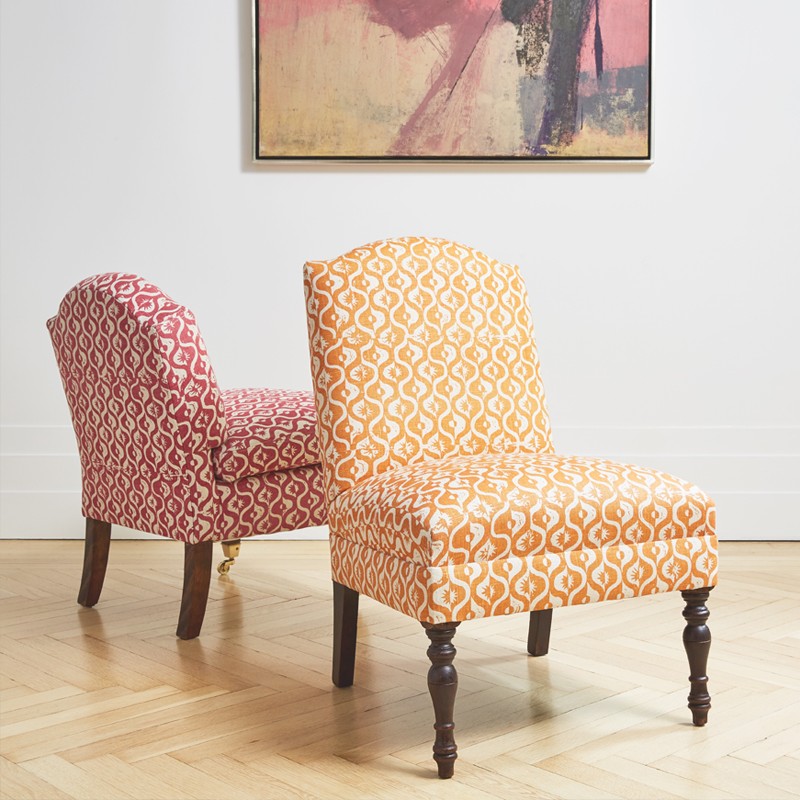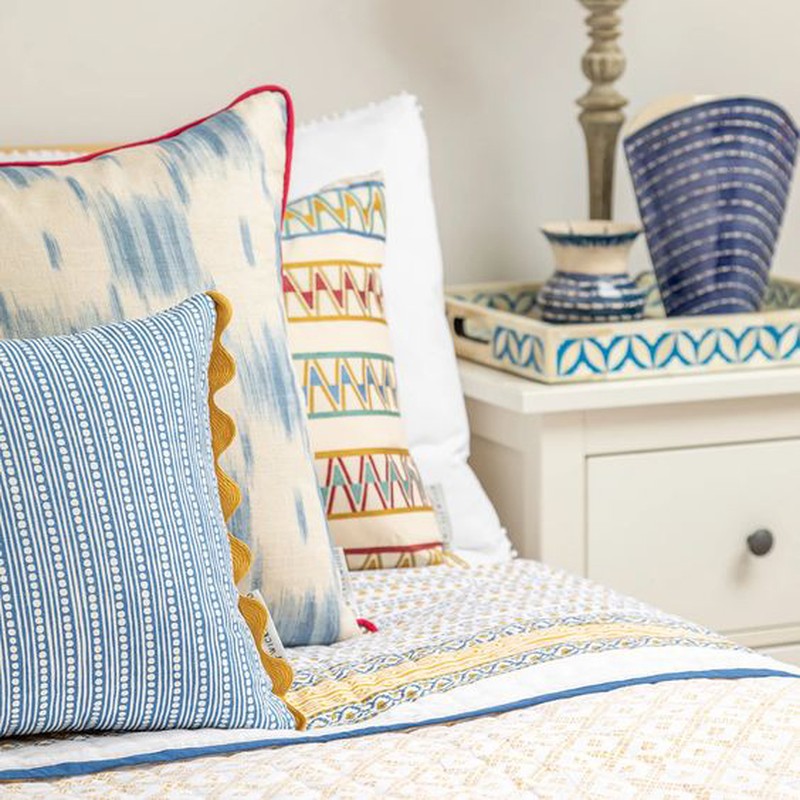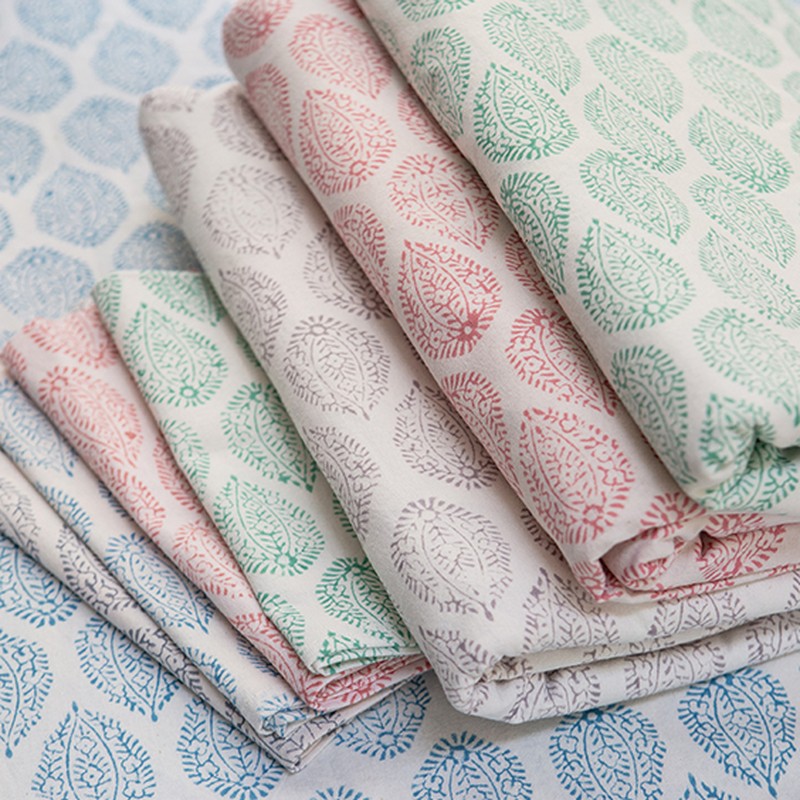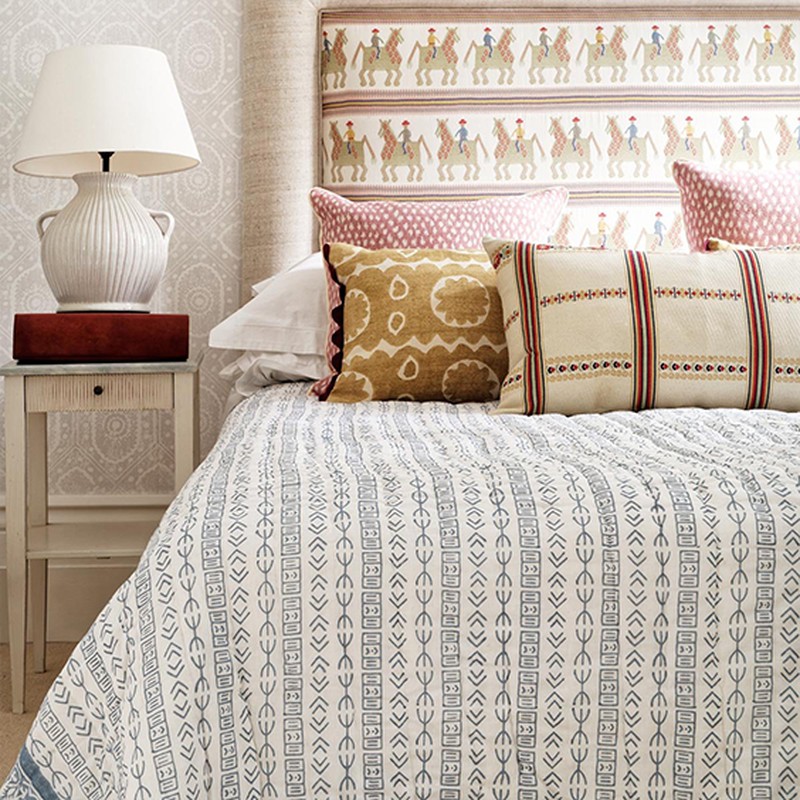Why Hand Block Prints Are Having A Revival
From geometrically aligned circles to eye-catching zig-zags and delicate paisleys, hand block-printed fabrics are the prettiest trend the interiors world has seen for a while. Companies such as Wicklewood and Kit Kemp’s favourite, Blithfield are producing stunning designs within an eclectic aesthetic, while self-taught designer Molly Mahon is developing bold, colourful patterns that celebrate the process.
“Block-printed fabrics are made by hand carving a design into wood or lino blocks, covering them with dye or ink and transferring the design onto fabric,” explains Wicklewood founder Caroline Downing Nadel. “The end result is a beautiful, artisanal textile which is entirely unique due to the handcrafted nature of the print. We design our fabrics in our London studio and work with local craftspeople around the world – from the UK to Guatemala and India – to bring them to life. Our block printing is done by artisans in Rajasthan, where the technique originated and where the craftspeople have years of expertise in carving the blocks and placing them perfectly to pull together the final product.”
Designers love using the technique because it immerses them in the process and delivers a unique finish that no machine could ever replicate. Molly Mahon, one of the foremost UK designers using hand block printing, explains why: “The blocks are quite small, constrained by the size that a hand can deftly lift and place. These hand-placed impressions give a liveliness and quality that is just not possible with large-scale, machine-printed designs. We call the slightly wobbly result of the print the ‘perfect imperfections’ – it’s this beauty that I find appealing. There is so much more in a piece of block-printed cloth than the finished piece. The whole journey is there: from the creation of the initial design, to the carving of the block, the mixing of the paint, the printing, the washing, the finished piece. It could be hung in a gallery and appreciated as much as any piece of art.”
Molly and her team produce fabrics for curtains, blinds, cushions, headboards, tablecloths, lampshades and upholstery. “It’s just so versatile. I am a total pattern-on-pattern person and have it on my furniture and walls, everywhere, but it really pings on a piece of furniture against a lovely painted wall,” says Molly, who runs workshops where you can learn the technique and create your own designs. “My favourite design has to be clover. I have a thing about four-leaf clovers – I love the symbolism of luck, hope, uniqueness. With the addition of the little spots, I think it makes a lovely, quintessentially English look. Mixed with the block-printed technique, it’s the perfect culmination of my design principles and this ancient creative process.”
Caroline favours the look for the bedroom. “Our hand block-printed quilts, such as Mali, Tapa and Kahala, feature a central design with a complementary border and are reversible so, with a simple flip of the covers, you can have an entirely new look in your room.”
Sarah K also specialises in quilts, alongside a range of napkins and tablecloths if you prefer a gentle nod to the trend rather than a full embrace. “The leaf-print table linen is one of our bestsellers,” says founder Sarah. Her delicate, intricate designs reflect the rustic charm of the process in a fresh, clean way, making them ideal for introducing the trend into your home.Your Guide To Using Hand Block-Printed Fabric At Home
These pretty, colourful designs lend themselves better to some rooms than others. James Arkoulis and Saskia Howard of Howark Design offer the following advice:
-
If you want to use two or more colourful prints, have two different scales and use the larger scale behind. For example, a larger print on a sofa and a smaller print on a cushion; or a larger print on a curtain, with a smaller print on a blind.
-
Go for larger prints on headboards. They’re a great place to start, especially against painter bedlinen – there’s no limit, you can really go wild!
-
On cushions, we like to use the print on the front and a plain behind. It gives the eye time to rest, creates balance and also helps the print stand out.
-
When working with plains, use texture. Rough linen and knobbly wool work well.
-
Tables are a good place to start introducing pattern. Printed napkins and tablecloths lift a space and can make a real impact.
-
Bold pattern on a footstool in the middle of a room adds interest and you can tone it down with a plain lacquer tray. This is also a budget-friendly way to introduce pattern.
-
A common mistake is to go small scale in small spaces. Be brave – as long as it’s balanced, you can go larger than you think.
-
Choose a minimum of three colours. Don’t be afraid to incorporate more of them but stick to the same tones – earthy, for example.
DISCLAIMER: We endeavour to always credit the correct original source of every image we use. If you think a credit may be incorrect, please contact us at info@sheerluxe.com.





